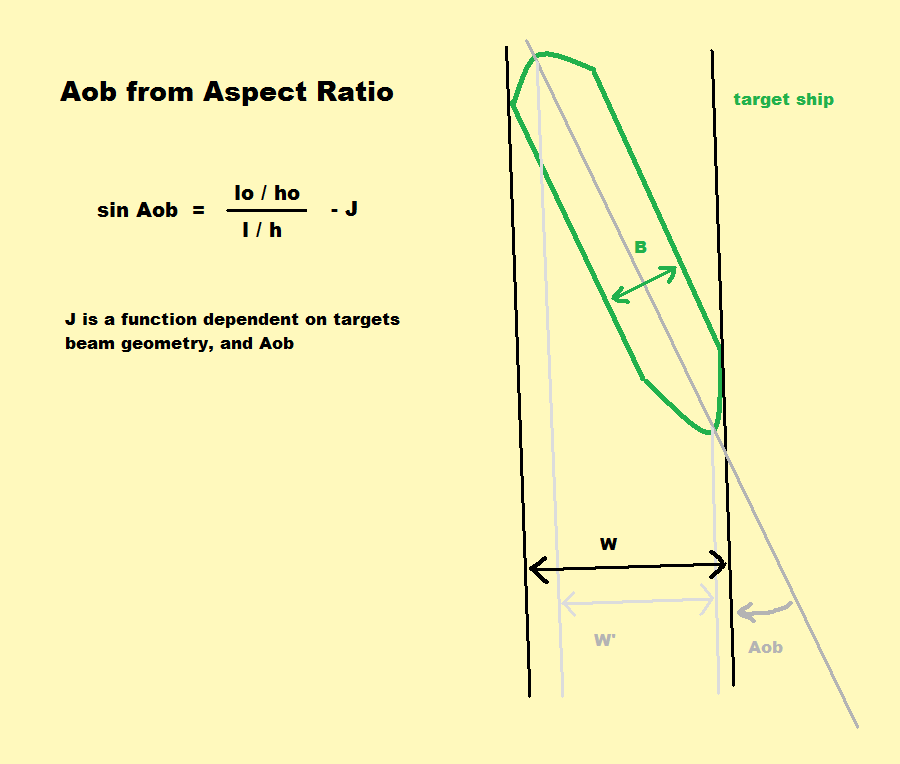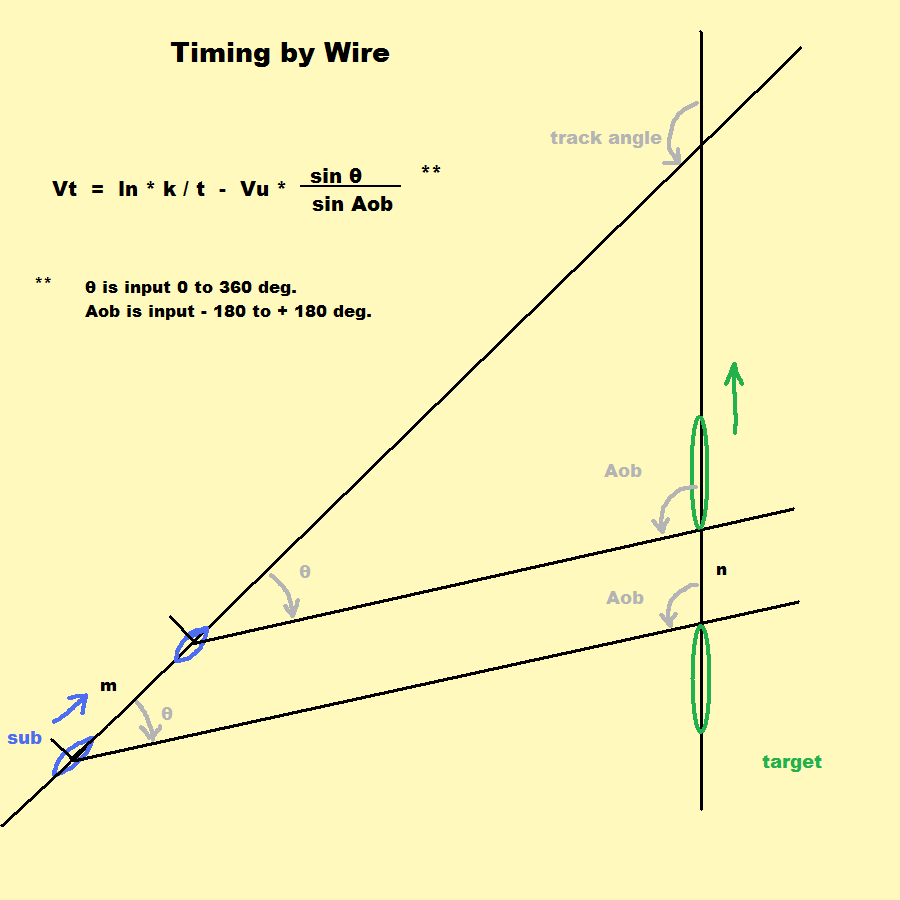 10-20-13, 02:27 AM
10-20-13, 02:27 AM
|
#11
|
Silent Hunter 
Join Date: Sep 2010
Posts: 3,975
Downloads: 153
Uploads: 11
|

Here is an illustration of the Aob from Aspect Ratio function:
I don't go into all the finer points of the math, but the diagram gives you a sense of the concept.
With the formula,
l is target length
h is target height
lo is observed length
ho is observed height
W is width
W' is adjusted width
J is a function which compensates for width (or beam) of target
If ships had no width, you could calculate the Aob without J, using the formula with the first term only. J was determined by using only 1 specific model. I considered trying to use different models where you could choose the most appropriate one for your situation, but decided this was more trouble than it's worth.
The ship model was based on the target having a beam equal to 1/8 of it's length. The stern having a radius of curvature equal to 1x the beam, and the bow having a radius of curvature equal to 3x the beam.
The difference between W and W' is zero at Aob's between 60 and 120 degrees, and is still very small between 30 and 150 deg. At Aob's close to 0 or 180 deg., it becomes important. The value of J is determined by using the formula
m * AR + b
where m and b are selected according to which of 4 zones the AR fall into.

The Timing by Wire function:
Ordinarily, timing by wire is done with the periscope at 0 deg., and pointing the sub at a location just ahead of the target ship to time the transit across the scope reticle. This allows for a simple calculation where the projected "wire" does not move on the target's track.
However, if we apply some geometry to the problem we can obtain the same information at other angles.
With the formula shown,
Vt is the target's speed, kts.
Vu is the sub's speed, kts.
ln is the target's length, ft.
t is the transit time, sec.
Aob is the Angle on the bow, deg.
theta is the relative bearing, 0 to 360 deg.
k is a conversion factor, ft./sec. to knots
If theta or Vu are zero, the 2nd term, Vu * (sin theta/sin Aob), drops out leaving us with the simplified method mentioned earlier.
The formula is obtained by using the law of sines, and noting the wire's location projected on the target track moves n distance, as the sub moves m. The triangle gets smaller, but the angles do not change.
The form of the equation may seem odd, with the subtraction of the second term, but the signs will work out right, and give the correct answer, provided one is careful to input the bearing as read off the scope, 0 to 360 deg., and input the Aob from -180 (port) to +180 (starboard) degrees. [Either or both the sine of theta, or sine Aob can be negative.]

|

|

|


 10-20-13, 02:27 AM
10-20-13, 02:27 AM



